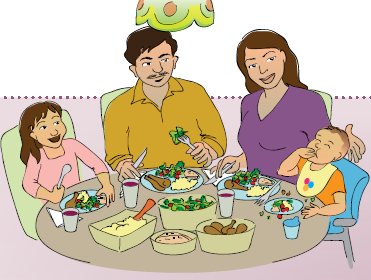9 Back-to-School Organizational Tips for Parents and Families
How do you help kids get ready for back to school?
As summer ends, parents and families start preparing for back-to-school schedules by adjusting their routines. It is often a stressful time for families as they transition from a laid-back summer to a hectic school schedule and, in many cases, to a new program or school. By implementing simple organizational strategies at the beginning of the school year, families can ease stress and help children and their teachers have a smoother transition. Below are a few tips to help you and your children get ready for back to school:
1. Vaccinations
According to the American Academy of Pediatrics, immunizations usually occur during your children’s check-ups. (Here are the recommended vaccination schedules for birth through age 6 and 7-18.) Making sure your children are up-to-date on their vaccinations is one of the best things you can do to protect them.
2. Bedtime
According to WebMD, bedtime routines are important for children. Regardless of age, regular schedules and bedtime rituals help us get the sleep we need and give us the ability to function at peak levels. Learn about the American Academy of Pediatrics guidelines outlining recommended sleep duration for children from infants to teens.
Are you struggling to get the little ones to sleep? A mini-assessment or the Bedtime Conversations Checklist and Action Plan can identify areas where educators can provide support.
3. Mental Health
If your children are struggling, you are not alone. Children thrive when they have healthy social interactions. The IECMH Consultation is here to support you.
4. Healthy Diet
Returning to your back-to-school fall routine also means ensuring children have access to healthy and quick weekday meals. Separate your children’s favorite lunch items into plastic containers to make lunch preparation easy. Teach them independence by pre-packaging lunch items. This preparation allows your children to access them quickly and put them in their own lunch boxes.
Encourage children to develop healthy eating habits that will last a lifetime. Check out MFE’s Back-To-School Green Meals and our Top 5 Green Sandwich Recipes! Go green for a boost of energy this school year. Take the MFE Back-To-School Meals Challenge. Add two greens to meals daily for 30 days for the family’s breakfast, lunch, snack and dinner. Also, discover nutrition tips and creative recipes in The MFE Nutrition Collection on the resources page. New resources are coming! So visit the nutrition collection often.
5. Schedules
Coordinating the schedules of all family members can be challenging. Hang a large paper or dry-erase calendar in a place where everyone sees it daily. Choose a different color for each family member so children can identify their own activities.
6. Paperwork
Keeping track of the papers children bring home can be overwhelming. Organize all paperwork relating to school activities and assignments in labeled folders and store the items in one place.
7. Everyday Supplies
Create a box of school supplies your children often use, such as glue, scissors, pencils, crayons, markers, rulers, paper and sticky notes. Keep this well-stocked box in a central area so children always have what they need for projects and assignments.
8. Daily Life
To help make school days less hectic:
- Create a closet organizer with pockets or shelves.
- Label each shelf with each day of the school week.
- Have your children help pick out clothes for each day and then put them into the organizer.
- Also, have one central location for backpacks and lunch boxes.
- When children complete their homework, ask them to put it in their backpacks so everything is ready to go in the morning.
9. Structure
Making even a few minor changes in your routine can have a significant effect on helping the school year go smoothly. For additional support, discover how family routines create structure and how you can set up that structure with these videos: Creating Structure and Rules for Your Children or Charts and Graphs to Help Create Structure.
However, one of the best ways to prepare for back-to-school transitions is by establishing strong, lasting, positive relationships with your teachers, providers and other school staff.
Have a great school year!





